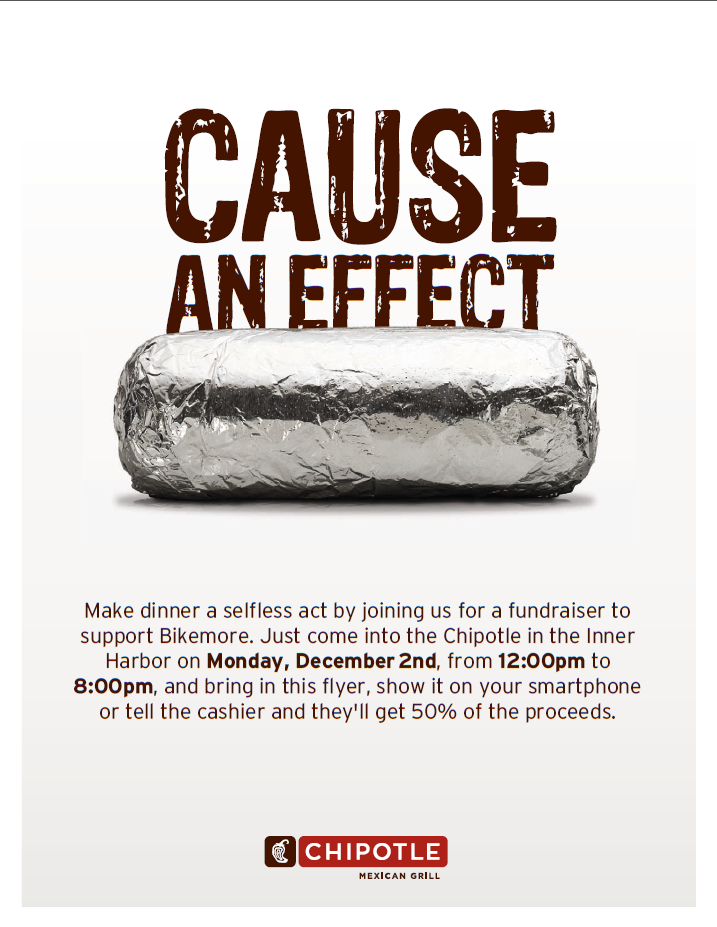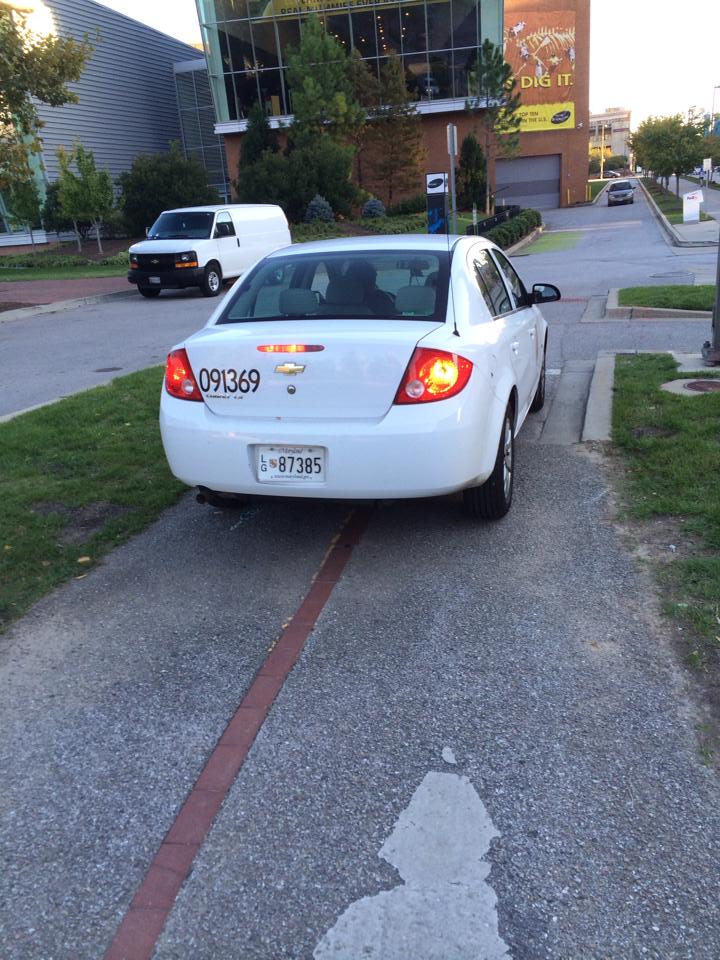 This seems like an appropriate time to talk about "The Streak." Cal Ripken got all the glory for his streak, but I'd like to think the NFL Films guy could narrate my very own streak if he was still with us.
This seems like an appropriate time to talk about "The Streak." Cal Ripken got all the glory for his streak, but I'd like to think the NFL Films guy could narrate my very own streak if he was still with us.
I had Chipotle every Sunday for a couple of years, long enough that I lost count. The Sunday I was double-booked and missed my beloved Chipotle... well, let's just say it didn't end without its tears.
You can imagine, then, how excited (honored?) I am that Chipotle is throwing an event to benefit Bikemore.
That's right: you get a delicious burrito, Bikemore receives a cut of the proceeds, everyone wins.
The whole shindig is going to take place at the Chipotle in the Inner Harbor on Monday, December 2 from noon to 8pm. Bring in this flyer, show it on your smartphone or tell the cashier you're there for Bikemore, and 50% of the sale will be donated to Bikemore, for our on-going efforts of improving bicycling in Baltimore.
It's that simple -- buy Chipotle, say "Bikemore," and we get much-needed revenue to continue our advocacy and education work.
Hope to see you there, and don't forget to RSVP on Facebook and share the event with your friends!








